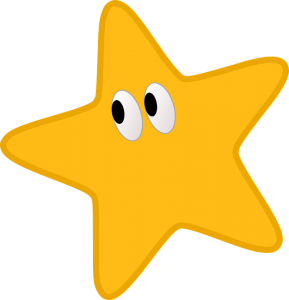
“Twinkle Twinkle Little Star” is one of the most, if not the best-known children’s lullabies ever written. But, who really wrote it: Wolfgang Amadeus Mozart (as many claim), or someone else entirely? And can it really help your children’s development, foster their skills, and teach them lessons?
SO, WHO REALLY WROTE IT?
If you asked someone, they’d tell you, “Mozart, of course!” They’d be correct… almost.
The popular story is that he composed it for his sister, Nannerl, in 1806. But according to John M. Cunningham at Brittanica.com, it isn’t true. The real story is that he wrote variations on a popular French folk song, “Vous dirai-je, Maman,” in the 1780’s. It was much later that one of those variations was put together by some anonymous person with the ubiquitous poem “The Star,” written by an English author named Jane Taylor, in 1806.
WHAT SKILLS CAN IT HELP MY CHILD WITH?
It’s not just “Twinkle Twinkle Little Star” that can help a child develop important lifelong skills, but it can be other songs like hello hello hello. According to experts, nursery rhymes are incredible tools for young children to develop language pitch, voice inflection, rhythm, and literacy; by using their mouth muscles, they also can develop better speech and coordination. It can also be used to foster basic math skills early, as well as teach shapes, colors, and even basic astronomy.
WHAT TOPICS CAN “TWINKLE, TWINKLE LITTLE STAR” LEAD INTO?
Since the nursery rhyme is all about stars, you can effectively foster interest in space, learn what stars are, the “shape” of stars (its points when drawn from human imagination), and when we can see them (at night). These topics will lead to more important lessons as children grow and begin to understand complex subjects.
WHAT ARE SOME LESSON EXAMPLES TO TEACH THESE SKILLS?
Here are a few things you can do to make it interesting for kids:
1. Make it into an art project! Kids love art, and there’s no better way to teach shapes and colors than through coloring them.
2. Make a simple math lesson. Draw out stars and have them count how many stars there are.
3. Read it to your child, and have them either say the words or read the words back to you. Correct them gently and sound out the phonetics so they can copy.
4. Teach them more about day and night, constellations, what stars they’ve seen, etc. depending on their age.
5. Have them come up with a simple story based on the rhyme to exercise their creative skills.
IN SUMMARY
No matter what, nursery rhymes are incredibly useful to teach children and speed along their lingual, physical, and mental development from an early age. You can even teach them about the true history of the nursery rhyme someday! Twinkle Twinkle Little Star lyrics are truly versatile.